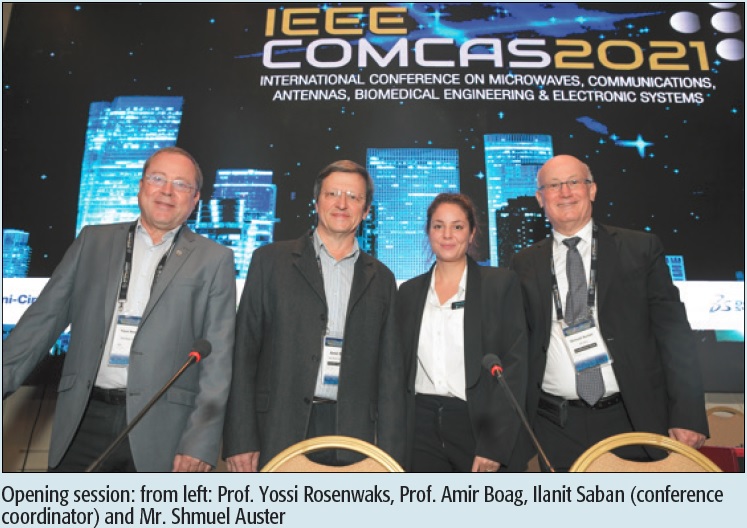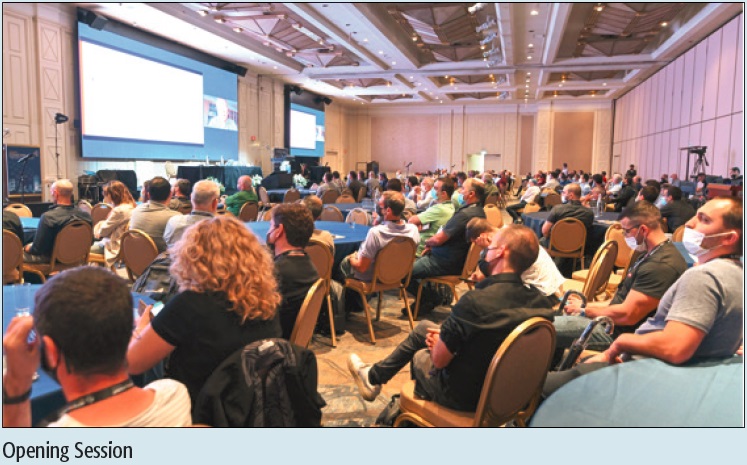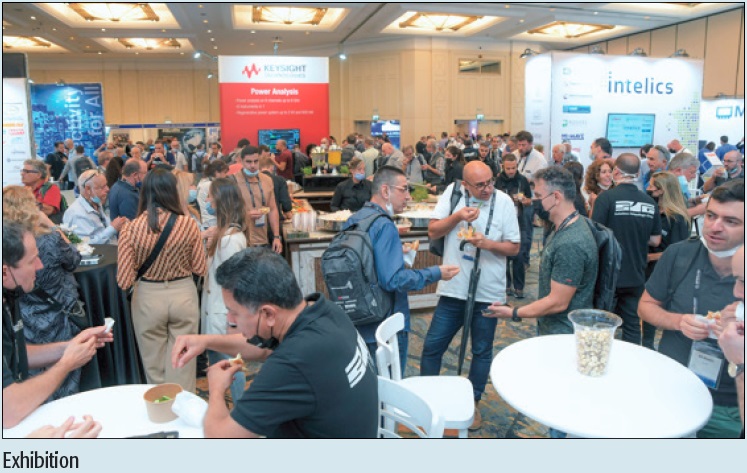
The 8th biennial IEEE International Conference on Microwaves, Communications, Antennas, Biomedical Engineering, and Electronic Systems (IEEE COMCAS 2021) was held 1–3 November 2021 at the David Intercontinental Hotel in Tel Aviv, Israel. The first two days of the conference included the plenary sessions together with eight parallel sessions, while the third day was reserved for short courses and workshops in six parallel sessions as well as an additional two plenary sessions. In spite of the Covid-19 situation, the live conference was attended by more than 1200 engineers, academics, and technical developers.

IEEE COMCAS is organized as a multidisciplinary international conference where scientists, engineers, and students can meet and discuss their common interests. In addition, it includes an industry-focused exhibition that features leading companies in the fields of antennas, microwave, solid-state, and systems engineering, where colleagues researching and developing the products and systems of tomorrow can interact with their industry colleagues.
This conference was sponsored by the IEEE Israel Section and the Association of Engineers in Israel (AEAI). It was technically co-sponsored by the IEEE Region 8, Microwave Theory and Techniques Society (MTTS), Antennas and Propagation Society (APS), the Communication Society (ComSoc) Chapter Israel, Aerospace and Electronic Systems Society (AES), Electronic Packaging Society (EPS), and the European Microwave Association (EuMA).
This year we had more than 200 technical presentations, 50 posters, 10 courses and special sessions, 52 invited speakers, 88 sessions, 8 parallel halls, and 80 exhibition booths over more than 5700 ft2. Emphasis continued to be on applications-oriented research and development, from antennas and devices to systems and software, including 5G cellular mobile, biomedical systems and applications, and phased array radars, with strong industry patronage and participation.
Our plenary session was opened with welcome addresses by Shmuel Auster, IEEE COMCAS Founder and General Chair; Amir Boag, IEEE COMCAS TPC Chair; and Yossi Rosenwaks, Dean of Engineering at Tel Aviv University. It was followed by Goutam Chattopadhyay (NASA-JPL/Caltech, USA) who presented a keynote lecture, “NASA Technologies to Find Life Beyond Earth and Answers to Other Science Questions,” and Massimo Comparini (E-GEOS, Italy), who also presented a keynote lecture, “Evolution of Space On-Board Technologies in the Global Geospatial and Connectivity Era.” Afterward, a keynote lecture on “Addressing 6G Energy Efficiency with a Gearbox-PHY” was presented by Gerhard P. Fettweis (Technische Universität Dresden, Germany), and the “Electrophysiology Meets Printed Electronics: The Beginning of a Beautiful Friendship” keynote lecture was presented by Yael Hanein (Tel Aviv University, Israel).

Two more plenary talks were presented on the last day of the conference: “A Technical Confluence of UWB Radar and Communications in a Congested RF Environment” by Mark E. Davis (Medavis Consulting, USA) and “A New Generation of Metasurface Antennas” by Stefano Maci (University of Siena, Italy).
Short courses “Array Antenna Synthesis — Theory, Techniques, and Applications” and “Inverse Scattering and EM Imaging — Theory, Techniques, and Applications” were presented by a team led by Andrea Massa, Giacomo Oliveri, and Paolo Rocca (University of Trento, Italy). The courses were highly successful and attracted large audiences.
Session topics at IEEE COMCAS 2021 included Network Routing and Performance, Microwave Systems & Radar, Computational Photonics: Theory and Applications, Wireless Apps, Antennas & Radomes, Underwater Acoustics, Biomedical Engineering, Communications for Societal Needs, Active Metamaterials, Bio-Electromagnetism, Millimeter Wave CMOS Circuits, Quantum Technologies, Communication Theory, Software and Techniques, and many more.
Our WIM/WIE Session was organized by Alina Karabchevsky and moderated by Maya Shor-Peled, Esti Toledo, and Alexandra Makarochkin. It hosted an invited talk by Dr. Irit Idan, Executive Vice President R&D at Rafael Advanced Defense Systems. The panel in this session, which included Prof. Yael Hanein from Tel Aviv University, X-trodes, and Nano Retina, Neta Goshen from Electrum Ltd., and Dana Cohen from Tel Aviv University, discussed Career Crossroads — Dilemmas of Women in Engineering.
Many dedicated members of the COMCAS team, both industrial supporters and conference organizers, saw their contributions recognized at the conference’s social events. Conference Chair Shmuel Auster presented Certificates of Appreciation to those who made special contributions to the conference.
Hosting regional conferences in various locations around the world is an excellent way to encourage IEEE members and societies and the technical community at large to participate. This helps improve recognition and generates growth for IEEE and its Sister Societies. The 8th IEEE COMCAS conference was highly successful, with participants from 32 countries who expressed their positive feedback and comments during and after the conference. COMCAS continues to be very successful and will likely be well attended in the future by many technologists who lead innovation and have an impact on the microwave, communications, antennas, biomedical engineering, and electronic systems technologies.